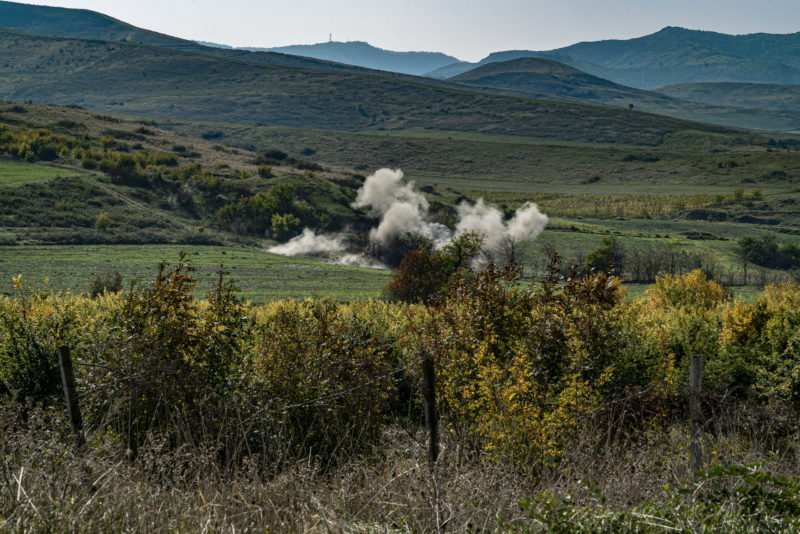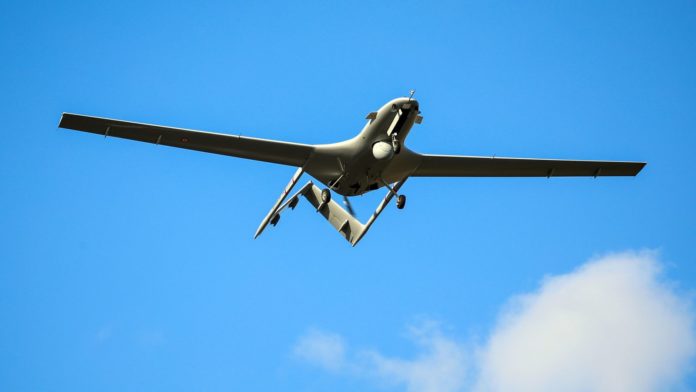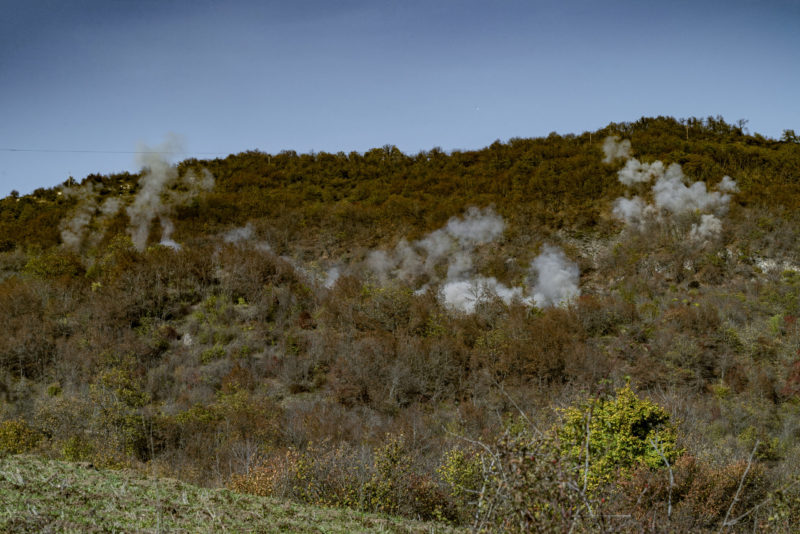By Thomas Mutch
“Don’t worry if you hear an explosion,” our Armenian guide tells us as we creep along the bombed-out streets of Martuni. “By the time you hear it, it has already missed you. You should only really worry if you hear the hum of a drone. Which you will,” he adds with a dry grin. This small town is less than two miles from the front line of a bloody battle between Armenia and Azerbaijan over the long-disputed region of Nagorno-Karabakh — an area about the size of Delaware that’s entirely within Azerbaijan and largely inhabited by ethnic Armenians.

The conflict dates back to 1988, flaring up with the dissolution of the Soviet Union. But now, in little more than a month, two unmanned aerial vehicles (UAVs) sent up by the Azeris — the Turkish Bayraktar TB2 and the Israeli-made Harop — have wiped out the Armenian defensive advantage and laid waste to billions of dollars of military hardware. The Bayraktar, often armed with laser-guided MAM warheads, strikes its targets in the same way a U.S. Predator would hit a terrorist camp in Afghanistan or Somalia. The Harop, by contrast, dives at its target like a kamikaze, exploding on impact.
A few minutes later, our guide takes a call and starts to look worried. “We’ve got reports of incoming drones,” he says, and points our convoy of journalists toward the nearest bomb shelter, which is a cellar repurposed for the town’s garrison of troops. Drone swarms have been targeting similar towns and military positions close to the front lines to soften up Armenian defenses before Azeri infantry and armor can charge their positions. It’s the modern version of the artillery barrage that preceded the storming of trenches in World War I.
To fortify their position in recent years, the Armenians purchased expensive anti-aircraft early warning systems from Russia. But in this war, those tools proved notoriously unreliable in detecting Azerbaijan’s lethal fleet of combat UAVs, which were much smaller and nimbler than the fighter jets the Russian systems were designed to help stop.
Our guide signals for us to stop and keep quiet; then he points to his ears and motions above. We hear a faint noise in the sky, a high-pitched whine that sounds like someone revving a dirt bike, followed by a series of much closer explosions. In the safety of the cellar, a dozen or so Armenian soldiers sit around smoking, sleeping, and playing cards as the shelling continues outside.










